 Oceanic Submersibles: 1938-39 Brin, Benedetto Brin, Galvani, Guglielmotti, *Archimede, *Torricelli
Oceanic Submersibles: 1938-39 Brin, Benedetto Brin, Galvani, Guglielmotti, *Archimede, *TorricelliWW2 Italian Submarines
Balilla class (1927) | Ettore Fieramosca (1929) | Archimede class (1933) | Glauco class (1935) | Pietro Micca (1935) | Calvi class (1935) | Foca class (1937) | Marcello class (1938) | Brin class (1939) | Liuzzi class (1939) | Marconi class (1940) | Cagni class (1940) | Romolo class (1943)Mameli class (1926) | Pisani class (1928) | Bandiera class (1929) | Squalo class (1930) | Bragadin class (1929) | Settembrini class (1930) | Argonauta class (1931) | Sirena class (1933) | Argo class (1936) | Perla class (1936) | Adua class (1936) | Acciaio class (1941) | Flutto class (1942)
CM class (1943) | CC class (Laid down) | CA class (1942) | CB class (1942)
The Benedetto Brin class were a repetition of Archimede class oceanic submersibles. They were partially double-hulled and differed by hardly more powerful diesels and larger conning tower similar to the one sported by the Foca class, with a 100mm/43 gun installed in it. The last two, Archimede and Toricelli were ordered under cover to hide the fact they were planned for transfer to Franco. In 1941-1942 Brin, Archimede and, probably, Guiglemotti had their gun removed from their CT and relocated on deck forward. Toricelli had an epic surface battle with the British sloop HMS Shoreham and destroyers Khartoum, Kandahar and Kingston in June 1940 in Red sea, and was scuttled by her crew. Galvani was sunk on 26 April 1940 in the Persian gulf by the British sloop Falmouth, Guglielmotti torpedoed on 17 March 1942 by HMS Unbeaten and Archimede on 15.4.1943 on the coast of Brazil by American aircraft.
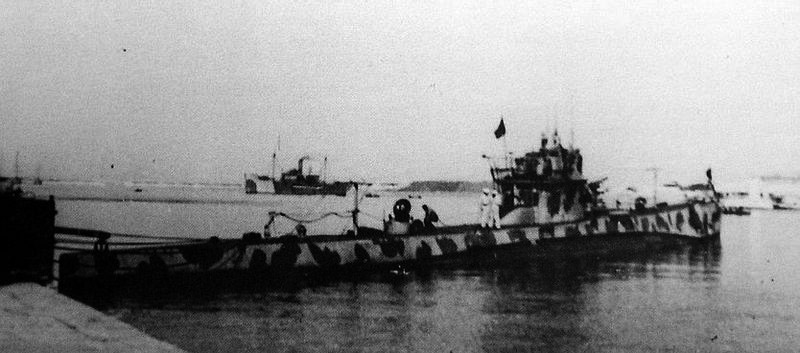
The Brin-class submarines were improved versions of the Archimede, replacements for submarines of that class, secretly transferred in 1937 to Franco’s Nationalists during the Spanish Civil War. These new submersibles displaced 1,000 long tons (1,000 t) surfaced, 1,245 long tons (1,265 t) submerged for 72.47 meters (237 ft 9 in) long, with a beam of 6.68 meters (21 ft 11 in) and draft of 4.54 meters (14 ft 11 in), partially double hulled. In surface they were powered by two 1,500 bhp (1,119 kW) Tosi diesels and when submerged by two 550-horsepower (410 kW) electric motors for respectively 17.3 knots (32.0 km/h; 19.9 mph) surfaceed and 7.8 knots (14.4 km/h; 9.0 mph) submerged. Surface range was 9,000 nautical miles (17,000 km; 10,000 mi) at 8 knots (15 km/h; 9.2 mph) and submerged still 90 nmi (170 km; 100 mi) at 4 knots (7.4 km/h; 4.6 mph). They had eight internal 53.3 cm (21.0 in) torpedo tubes, four in the bow and sternand six spare torpedoes, plus their 100 mm (3.9 in) deck gun aft in the conning tower. Most had it relocated later on the forward deck and their conning tower re-built to a smaller “German” design. This was completed for close defence by two pairs of 13.2 mm (0.52 in) Breda machine guns.
Design of the class
Development
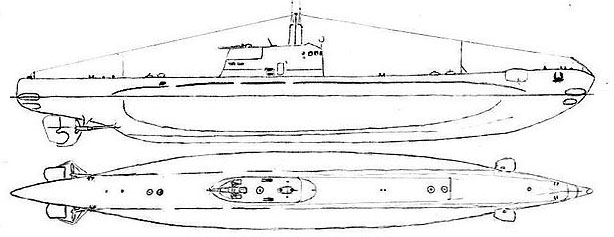
The Brin class comprised four units, together with Galvani, Guglielmotti, Archimede and Torricelli. These were a derivation of the “Archimede” class with a more refined hull and thus, despite an increase in displacement, speed was improved, with the same engine power. The machine gun armament was strengthened to face aicraft attacks, with four instead of two 13.2 in paired mounts located aft in the large conning tower, while their single gun was located on the aft platform f the conning tower, given a rotating platform flush with the conning tower deck.
The Brin arrangement also showed new shapes for the bow in the so-called “shark nose” and the superstructure had its outline differed significantly from that of the first Archimede class and other submarines in service.
Construction and Transfer Shenanigans:
Originally, the Brin class was supposed to include only three boats: Brin, Galvani and Guglielmotti. But construction of the latter was underway when Mussolini force the Regia Marina to donate the ones of the previous “Archimede” class to the Spanish Nationalist Navy, replacing these under the same name by supplementary boats of the Brin class to disguise their transfer as it was under scrutiny by an international commission. The newly boats delivered were dusbstituted by name by two new boats on slipways, which became unaplanned, additional boats derived from the “Brin” class submarines. They were a sub-class however as they differed, having slightly different dimensions but kept the same name. Meanwhile the previous submersibles were never officially decommissioned and even identifiers were passed on from the previous to the next boats.
Issues:
The experience of using these submarines for Atlantic Operations highlighted some issues though in service:
These Brin class boats had a too soft roll, poor seakeeping, with waves flushing the stern constantly. Together with the modification work on the conning tower which during the war were carried out on almost all pre-war submarines, the arrangement of the gun was also changed, moved to the deck forward for better arc of fire, albeit it was no longer protected from the waves, unlike in the original design. The aft upper position was indeed an attempt at giving a well protected position while still offering a reasonable arc of fire. Despite this important modification, and despite cutting part of the excessively refined stern drive, the Brin class still demonstrated by 1942-43 poor sealeeping, notably still at the stern. They were subject to capping from the stern, damaging for electrical panels of the main engines in the control room as water rushed in below by the rear.
About the names:
Benedetto Brin (1833-1898) was a famous engineer and politician, playing major role modernizing and expanding the young Regia Marina, notably in the Ironclad age.
Luigi Galvani (1737-1798) was an Italian physician, physicist, biologist, philosopher and early pioneer of electricity, a key figure of the enlightenment in Europe.
Alberto Guglielmotti (1812-1893) was a Dominican order priest and writer best recognized for his history of Italian mariners.
Archimedes (Ἀρχιμήδης) was of course the Greek genius scientist of Syracuse, needing no more introduction.
Evangelista Torricelli (1608–1647) ) was a physicist and mathematician, student of Galileo best known for his invention of the barometer among others.
Hull and general design
The Brin-class submarines were improved versions of the preceding Archimede class, displacing 1,000 long tons (1,000 t) surfaced, 1,245 long tons (1,265 t) submerged for 72.47 meters (237 ft 9 in) long, a beam of 6.68 meters (21 ft 11 in), a draft of 4.54 meters (14 ft 11 in) and partially double hulled. The upper outer hull section was straight with a gradual slope and then “cutlass” perculiar bow shape (or shark type) with the usual cable and net cutting saw forward, part of suspended cables attached to the CT persicope mast gantry, and two supports. The dive planes were located forward at the usual place and with the standard shape, folding down. There were two anchors in wells.
Two hatches were located forward above the bulkhead separation between the crew quarter’s compartment and torpedo room forward, and two more also at the bulkhead between the engine room and aft torpedo room. There was a central compartment below the CT, used as central post. There was a double keel below the hull with the central belly section that could be jettisoned in emergency, used as ballast. The main water ballasts formed large blisters on either sides and the stern fell in a peculiar way without sheer, but straight sides, which proved problematic while underway surfaced. The two aft diving planes were located mid-way to the axial rudder post. The latter also formed two anti-collision bars.
The conning tower was the most instantly recoignzable item of the design. It comprised the usual helman post with windows forward, fully covered for rough sea surface navigation, the conical conning tower central well with the attack and watch persicopes in tandem, the gantry between them supporting the cables, and a long, faired aft sail section with two twin Breda HMG AA mounts on either wall and at the end, the 100 mm/43 OTO M1931 (later replaced by a 47 cal. OTO 1938). It rested on a platform for a reasonable fire arc aft, with a removable panelling around.
Powerplant
For surface running, the Brin class submarines boats had two 1,500 bhp (1,119 kW) Tosi-Fiat diesel engines, driving each a single aft propeller of the usual bronze three bladed model, for a top speed of 17.3 knots (32.0 km/h; 19.9 mph). Submerged, the two 550-horsepower (410 kW) Marelli electric motors were clutched on and brough the submarines to 7.8 knots (14.4 km/h; 9.0 mph). The surface range was 9,000 nautical miles (17,000 km; 10,000 mi) at 8 knots (15 km/h; 9.2 mph) which enabled operation sin the Atlantic (or both the Mediterranean, Africa and the Indian Ocean from the red sea, which was the case here). Submerged at 4 knots (7.4 km/h; 4.6 mph) the range was down to 90 nmi (170 km; 100 mi).
Armament
The Brin class submarines diverged little from previous designs, with the same eight tubes arrangement, all internal, four in the bow, four at the stern. This made for a limited spread, but skilled captains managed to completely turn around their boat for the second attack if need be. These eight internal 53.3 cm (21.0 in) torpedo tubes had all their torpedoes pre-loaded at port, leaving six spares, for a grand total of 14 torpedoes for a patrol. For smaller surface targets, a single 100 mm/43 (3.9 in) OTO Modello 1927 deck gun for combat on the surface. The gun was initially mounted in the rear of the conning tower, but this was re-sited on the forward deck later in the war in the surviving boats and the large conning tower was re-built to a smaller design. The light anti-aircraft armament consisted of one or two pairs of 13.2 mm (0.52 in) machine guns.[1]
Cannone da 100/43 Mod. 1927
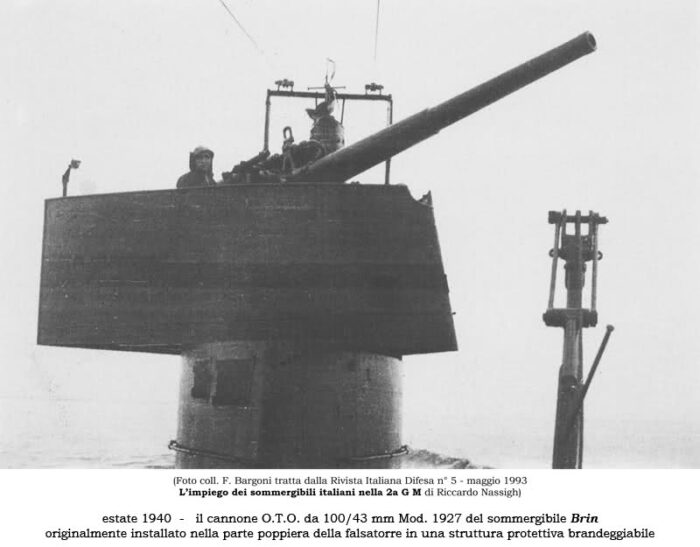
This new deck gun was an unsuccessful attempt by OTO to reduce its size for submarine use. Its location on a turntable aft of the conning tower, unique to the Brin and Foca class, was not very succesful. It was replaced with a standard deck-mounted 100 mm/47. It also only entered service by 1937 after ten years or tests. The idea that an entire protective fairing could turn with the gun and thus reduce is chassis, making it lighter and thus, relocated on a taller spot seems good on paper, but the manual turntable traverse was slow, angles restricted, albeit the elevation was good.
Specs 100 mm/43 (3.9″) Model 1927
Length oa 170 in (4.300 m)
Fixed ammo, HE 30.4 lbs. (13.8 kg), Muzzle Velocity 2,625 fps (800 mps)
Rate Of Fire: 8-10 rounds per minute
Range with 30.4 lbs. (13.8 kg) HE at 35 degrees: 12,000 yards (11,000 m)
Model 1938 mounting -5 / +35 degrees, 200 degrees.
Cannone da 100/47 Mod. 1938 (1941)
In 1941-42 after refit, the main gun was relocated from the aft conning tower to the forward deck, above a raised platform to avoid sea spray. The old Modellu 1927 was replaced by a brand new 100 mm/47 (3.9″) Modello 1938. The bandstand was well integrated into the hull and the relocation allowed to redue the size of the coinningf tower, in the “German style” common to wartime modifications. The 100 mm/47 derived from the earlier Modello 1928 specifically intended for submarines and used on a few auxiliary vessels, all manufactured by OTO. After it were developed the Modello 1931, 1935 and 1938 for Subsmarines, present on the the Glauco, Marcello, Cappellini, Liuzzi, Marconi, Cagni, Sirena, Perla, Adua, Argo, Acciaio and Flutto classes.
Specs
Gun Length oa: 194.5 in (4.940 m), 8-10 rpm.
Fixed Ammunition (HE) 30.4 lbs. (13.8 kg) 2,756 fps (840 mps)
Range: 35° 13,800 yards (12,600 m), OTO 1932
Weight 4.6 tons (4.7 mt) -5 /+32 or 35°.
To compare the previous Cannone da 100/43 modello 1927 had the following specs:
170 in (4.300 m) long, 8-10 rom. HE shells: 30.4 lbs. (13.8 kg), muzzle Velocity 2,625 fps (800 mps)
Elevation -5/+35°. Range: 30.4 lbs. (13.8 kg) HE Elevation/35° 12,000 yards (11,000 m).
AA: 2×2 Breda Breda Mod. 31
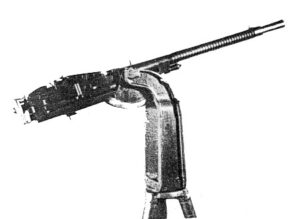
The anti-aircraft defence counted on two twin Breda M1931 13.2 mm L/76 heavy machine guns, placed aft of the conning tower. Each mount weighed 695 kg, but ensured an elevation of -10° to 90°. They fired 125 g unitary rounds, with a muzzle velocity of 790 m/s, maximum range of 6,000 meters and effective range of 2,000 meters. Their rate of fire was 500 rounds/min, so 2000 rounds when both twin mounts fired in concert, however.
14x 533 mm (21 inches) torpedoes
Models available in 1937:
-W 270/533.4 x 7.2 Veloce: 1,700 kg, 7.2 m WH 270 kg, 3,000-4,000 m/50 knots or 12,000 m/30 knots.
-W 270/533.4 x 7.2 “F”: 1,550 kg, 6.500 m, WH 250 kg, speed 3,000 m/43 knots or 10,000 m/28 knots
-W 250/533.4 x 6.5: 1,550 kg, 7.200 m, WH 270 kg, 4,000 m/48 knots or 12,000 m/30 knots.
-Si 270/533.4 x 7.2 “I”: 1,700 kg, 7.2 m, WH 270 kg, speed 3 km/42 kts or 7 km/32 kts, 9,2km/30 knots, 12km/26 kts
-W 250/533.4 x 6.72: 7.2m, WH 270 kg speed 4km/49 kts or 8km/38 kts.
-Si 270/533.4 x 7.2 “M”: 1,7 ton, 7.2 m, WH 270 kg speed 4km/46 kts, 8km/35 kts or 12km/29 kts.
They were also given also a pair of hydrophones.

Author’s impression while underwater
⚙ specifications |
|
| Displacement | 1,060 long tons (1,077 t) surfaced, 1,313 long tons (1,334 t) submerged |
| Dimensions | 73 x 7.19 x 5.1m (239 ft 6 in x 23 ft 7 in x 16 ft 9 in) |
| Propulsion | 2× CRDA/Fiat diesels, 2x CRDA electric engines |
| Speed | 17.4 kts (20.0 mph; 32.2 km/h) surfaced, 8 kts (9.2 mph; 15 km/h) submerged |
| Range | 2,500 nmi/17 kts surfaced, 8 nmi/8 knots submerged* |
| Armament | 8× 533 mm TTs (4 bow, 4 stern), 2× 100 mm/47, 2×2 13.2 mm HMG |
| Test depth | 100 m (330 ft) |
| Crew | 58 |
Modifications
In 1941-1942, depending on the time they entered drydock for maintenance, Archimede, Brin and Guglielmotti were modified, with their single aft 100mm/43 OTO 1927 relocated forward and replaced by a single 100mm/47 OTO 1938. This enabled to shortened and rebuilt the conning tower into a new smaller open model.
Evaluation
In 1938, after acceptation trials, working out, fixes, these submarines were placed under command of the Taranto Submarine Group, 44th Squadron. Ferraris and Galilei were temporarily attached to this unit. In 1939, the squadron comprised all five units of the Brin clas and after a reorganization became the 41st. Brin and Galvani were relocated to the Submarine Flotilla in East Africa. From there, Brin between June and July 1939, made a cruise in the Indian Ocean through the south-west monsoon, to study the behavious of the class in rough seas for future operations. It was believed indeed that operated surfaced in poor wether with limited vibility would increase their radius in relative safety for a trade war. But this reveales many shortcomings in particular with the stern section, always awash. Guglielmotti did the same, but rather than tropical waters, in the Atlantic in winter and joined other subs of different classes to experiment operations of oceanic submarines in that Ocean in the bad season.
Individual training was very intense in the months preceding the start of the war for Italy in 1941. Numerous exercises were carried out, and extra cruises allowed to identify the best conditions operating this type of submarine. By June 1940 all units of the Brin class, with the exception of Brin herself were back to Italy. Brin remained stationed in the Red Sea.
Lieutenant Luigi Longanesi Cattani commanded Brin at the time. He made a first patrol in the Strait of Sicily, between Pantelleria and the Tunisian coast and back to base at Augusta on 15 June without contact (see the full records below). Long story short in October after four Mediterranean patrols she was sent Bordeaux (Betasom) via Gibraltar and attacked by British destroyers and managed to reach Tangier, then a neutral international zone. Later she proceeded and met in the Gironde estuary the ambushing T class HMS Tuna, and both duelled but missed.
She entered Bordeaux, and made 5 patorls with better results notably on 13 June 1941 off the Azores gutting the convoy “SL 76”. Later she was back in the Med, but for lackluster results, and on the armistice, she was ordered to Bona to British authorities, and sent to Malta. By May 1944 she was sent to Colombo to train British ASW personal until returned in Taranto by December 1945, decom. in 1948 with 26,426 miles crossed. She was the lucky one. Other Brin class boats were all sunk:
Galvani was sunk by the British sloop HMS Falmouth near the Persian Gulf on 26 June 1940. Guglielmotti sank the Greek tanker Atlas in the Red Sea on 6 September 1940 but was spotted and torpedoed by HMS Unbeaten on 17 March 1942. Archimede escaped from East Africa in 1941 to Bordeaux, which was quite a feat. Only to be sunk by US Navy PBY Catalina off Brazil on 15 April 1943. Brazil indeed, at war with the axis, hosted USN bases, and had its own patril seaplanes as well to protect convoys in the South Atlantic. Torricelli had the most amazing stiry of them all. She was scuttled in the Red Sea on 23 June 1940, after an epic engagement versus a sloop (Shoreham) and no less than three K class modern destroyers, HMS Kandahar, HMS Khartoum, HMS Kingston, after a surface duel, under command of Salvatore Pelosi.
Career of The Brin Class
 Brin (1938)
Brin (1938)
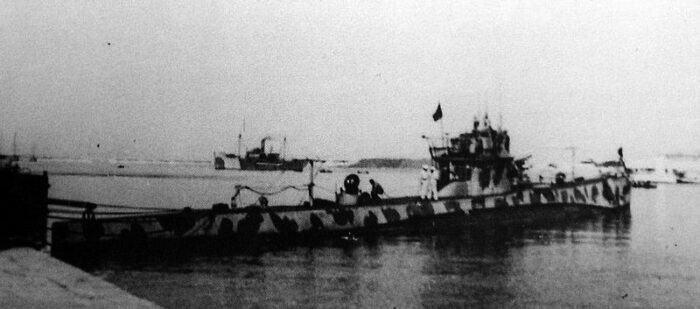
Brin was laid down on 3 December 1936 at Tosi in Tarento, launched on 3 April 1938 and completed on 18 April 1939. On 20 January already she was assigned to the Red Sea-Indian Ocean area, and from 19 June to 5 July 1939 she cruise the Indian Ocean with Otaria in the Monsoon to test surface navigation, with rather disappointing results.
She was still in the Red Sea in September, and returned home on 4 March. She made four Mediterranean patorls without results. By October 1940 it was decided to send her to the Atlantic, leaving on 28 October under command of Lieutenant Luigi Longanesi Cattani (took command on 11 January 1939). She transited Gibraltar on 4 November and surfaced in Spanish territorial waters only to be was attacked by two destroyers that went for a ramming run, and she took refuge in Tangier with the other sub. Michele Bianchi (Adalberto Giovannini) which needed battery repairs. She made a run on 12-13 December and made it into the Bay of Biscaye. On 18 December while entering the mouth of the Gironde she was attacked by ambushing T class HMS Tuna.
Both tried to outurn each others, and in all, Tuna launched ten torpedoes, the Brin two, missing, then they started a gunnery duel. However, Tuna’s commander spotted two trawlers identifed as incoming German TB or destroyers, and left the area. Brin arrived safely to enter Betasom, and made five Atlantic patrols. On 13 June 1941 she attacked the British convoy SL.76 and sent to the bottom the steamer Djurdjura (3460 tsl), Greek Eirini Kyriakydes (3781 TGB) and claimed two merchants damaged. Other sorties were eventless. She was ordered back to the Mediterranean on 20 August, arrived in Messina on 10 September and made other patorls, and by August was sent between Algeria, Ibiza and Majorca in ambush. On 10 August she was to report any sighting and attack afterwards. Operation Pedestal just begun, and she was part of the submarines that were engaged, but she was not in position. On 10 June 1943, she spotted an allied convoy near Bougie, launched four and three torpedoes against two steamers, 2 hits observed for the first, listing to port, two explosions heard for the second, unconfirmed.
On 7 September 1943, the “Zeta” Plan was activated to counter the planned allied landing in southern Italy, and she was placed in ambush with ten other submarines in the Lower Tyrrhenian Sea, between the Gulf of Gaeta and the Gulf of Paola. She was spotted by HMS Shakespeare off Punta Licosa, with Velella, proceeding on parallel course. Velella was attacked first while Brin was sailing near the coast adn nearly invisible. Vellela was sunk, with the underwater explosion heard from Brin. The armistice was soon learned and Brin surrendered to the Allies at Bona, then on 16 September, transferred to Malta, then Taranto on 13 October and overhauled. Between May 1944 and December 1945 she was sent to Colombo, Celyon, to train British ASW crews until back home, placed in reserve intil stricken on 1 February 1948 and sold for BU after 17 patrols, 16 cruises for 26,426 miles and sold survivor of the class.
 Galvani
Galvani
Galvani was laid down at Franco Tosi Shipyard, Taranto on 3 December 1936, launched 22 May 1938, and commissioned on 29 July 1938 under command of Lieutenant Commander Gianpaolo Giordana. She trained between Taranto and Messina for the Command School Division. From 4 January 1939 Lieutenant Renato Spano took command for her trip to Massawa, Reitrea, Italian East Africa from Taranto on 20 May with exercises underway and a stop in Tobruk on 8-10 June, arrived on 16 June. By June 1940 she was still in the Red Sea with the 81st Submarine Squadron and started a first patrol on 10 June to the ambush sector off Oman on 23 June, making an unsuccessful attack on 13 June 15 miles NW of Perim against a cruiser and escorting destroyer.
On 24 June, she was spotted attacked by the sloop HMS Falmouth and destroyer HMS Kimberley, while she was submerging, Falmouth landed a shells in her stern, puncturing her aft torpedo room. Second chief torpedo man Pietro Venuti, closed the hatch, isolating the boat, trapping himself (Posthumous Gold Medal). Depth charges rained until Galvani emerged stern-first. Her cannon and heavy machine guns were unusable, and she sank by the stern after two minutes. In all, 25 men died, 3 officers, 5 petty officers, 17 petty officers and sailors but 31, including commander Spano managed to escape in that time she was surfaced, and were rescued and taken POW by the K class destroyers and sloop.
 Guglielmotti (1939)
Guglielmotti (1939)

Guglielmotti was laid down at Cantiere Franco Tosi in Taranto like her sisters on 3 december 1936, launched on 11 settembre 1938 and commissioned 12 octobre 1938. By June 1939 she cruised to Lisbon to check crossing conditions in the Strait of Gibraltar for future wartime operations, notably noting the strong currents. From Taranto she sailed with Iride on 22 September via Tobruk on 25-26 September to Port Said on 28 September-2 October and reached Massawa, Red sea, on 8 October 1939 with the 81st Submarine Squadron. Still there in June 1940, she made a sortie on 21 June 1940 and on the 22, she recovered the crew of Macallè, lost after grounding a week earlier. On 26 July she left Massawa with the destroyers Nullo and Battisti in search for a reported British merchant ship, never spotted. On the afternoon of 6 September, now under command of Lt.Cdr Carlo Tucci, she spotted and hit the Greek tanker Atlas (4008 GRT) with two torpedoe and finished her off with two more, one missing.
In January-February 1941, the fall of Italian East Africa was near and she was ordered to be transfered to BETASOM in Bordeaux, meaning a very long and dangerous trip. Guglielmotti was in fact the last to leave Massawa on 4 March 1941 under commander CF Gino Spagone, with extra personal. The way north was blocked by the Britiosh so she had to circumnavigate Africa. She managed to leave the Mozambique Channel, rounded the Cape of Good Hope, refueled from the German tanker Nordmark and sailed west of the Cape Verde Islands and Azores, passed through the Bay of Biscay and arrived in Bordeaux on 7 May 1941, after a trip of 12,425 miles over 66 days. She badly needed an overhaul, from June to August. On 22 September 1941 she sortied Le Verdon to return to the Mediterranean and on the 30th, crossed Gibraltar. On 16 October she arrived in Messina, mission accomplished. From November 1941 to February 1942 she was modernized in Taranto and left for a mission on March 15, 1942 to Cagliari. However at 6:AM on the 17th, while surfaced, she was spotted and torpedoed by HMS Unbeaten. She sank with all hands 15 miles south of Cape Spartiventon Calabria. LtCdr Federico Tamburini, six officers, 16 petty officers, 38 ratings disappeared but a single body was later recovered.
 Archimede
Archimede
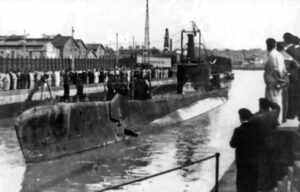 Archimede was laid down at Franco Tosi, Taranto on 23 decembre 1937, launched on 5 march 1939, and entered service on 18 april 1939. In 1940 she was in Massawa with her sisters at the 81st Submarine Squadron under command of Lieutenant Mario Signorini from 29 April 1940. She started her first war patrol on 19 June but was diverted to Assab after a wee to fix leaks of methyl chloride, a refrigerant gas, that killed four men and poisoned many others (two more died after landing), eight went mad and 24 were seriously poisoned by the failure of the air conditioning system. It was modified to replace methyl chloride by freon and she returned to service on 31 August with a new crew.
Archimede was laid down at Franco Tosi, Taranto on 23 decembre 1937, launched on 5 march 1939, and entered service on 18 april 1939. In 1940 she was in Massawa with her sisters at the 81st Submarine Squadron under command of Lieutenant Mario Signorini from 29 April 1940. She started her first war patrol on 19 June but was diverted to Assab after a wee to fix leaks of methyl chloride, a refrigerant gas, that killed four men and poisoned many others (two more died after landing), eight went mad and 24 were seriously poisoned by the failure of the air conditioning system. It was modified to replace methyl chloride by freon and she returned to service on 31 August with a new crew.
By early 1941 with the fall of Italian East Africa she was ordered to Bordeaux and departed on 3 March 1941 for a “round africa trip” via the Mozambique Channel, Cape of Good Hope, refuelled to tanker Nordmark, transited west of the Cape Verde, Azores, entered the Bay of Biscay, and reached Bordeaux on 7 May 1941.
Her first Atlantic patrol was under command of Lieutenant Commander Gianfranco Gazzana Priaroggia from 23 May 1942. She spotted the light cruiser USS Milwaukee escorted bu the destroyer USS Moffet, launched two torpedoes, heard two explosions, no hit reported. On 16 June she sank with a single torpedo the Panamanian steamer Cardina (5586 GRT) on the Buenos Aires-Trinidad route and later the US steamer Columbian. On 15 September 1942 while in ambush between Freetown and Cape San Rocco (Lieutenant Guido Saccardo) on 9 October she torpedoes and left dead in the water the ocean liner/troopship SS Oronsay (20,043 GRT) with two torpedoes, and finishing her off with another five torpedoes, waiting she was evacuated on lifeboats. The following night she attacked another large troopship liner, “New Hellas” (16,991 GRT).
She heard torpedoes hitting apparently premature explosions. Spotters saw the detonations and the captain ordered an escape at full speed. On 17 November, Archimede returned to base, and departed for a second sortie on 26 February 1943. On 15 April she was vectored in by th axis command to a German Type XIV supply U-Boat, when spotted, surfaced underway, by a USN Consolidated PBY Catalina seaplane. Archimede opended fiore with her four Breda heavy machine guns and apparently damaging it, but the Catalina had time in its low pass tp make four acurate hits.
The detonation ruptured her hull and she sank after breaking in two off Fernando de Noronha, 350 miles from Natal. Only 25 survived, mostly present on the CT and below when the forward half was left adrift, including commander Saccardo, thrown into the water, later climbing onto the three dinghies launched by the Catalina itself, without food supplies. In the following 15 days, 6 men died of exposure, hunger and thirst. One dinghy with 7 men (including Saccardo) disappeared on 1 May when trying to reach ship sighted in the distance. Another with 6 men, disappeared two days later and the the last one was found by a fishing boat on 8 May 1943 near Fernando de Noronha, 27 days after sinking and a single survivor Petty Officer Giuseppe Lo Coco from Palermo. He managed to live until 30 August 2004.
Archimede was the most successful of the class, with a total of 7 patorls over 43,847 miles surfaced, 2058 submerged.
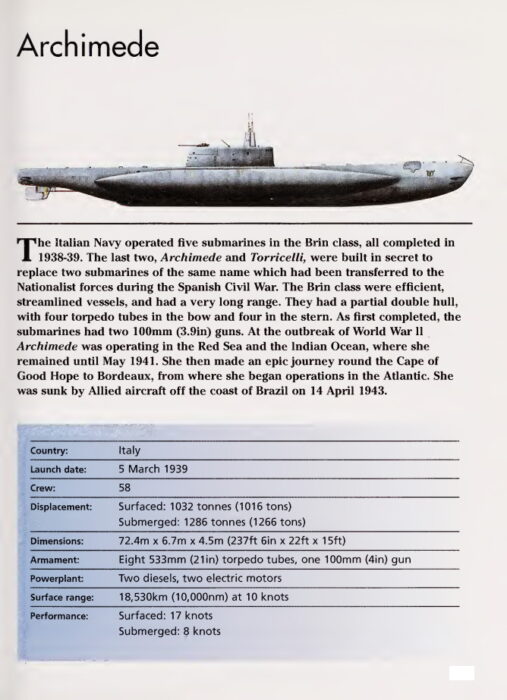
 Torricelli
Torricelli

Torricelli was laid down at Tosi Shipyard, Taranto on 23 December 1937, launched on 5 March 1939 and commissioned on 7 May 1939 under command of Lieutenant Commander Alessandro Michelagnoli, at the head of the 41st Squadron. She was in Massawa in June 1940 but with the newly formed 82nd Submarine Squadron since 29 April. Under LtCdr Salvatore Pelosi (from 12 April) she departed for her first patrol on 14 June 1940, to replace Galileo Ferraris and took position on the 19th off Djibouti.
Next, she was order further south and reached that point on 21 June, and was spotted and attacked by British destroyers, perhaps informed of her planned route after capturing Italian ciphers found on the captured submarine Galileo Galilei. She made a dive but had been damaged and needed repiars, so she returned to base. Vut underway on 23 June, she was attacked, dove, and then depth chargeed by the gunboat HMS Shoreham near Bab el-Mandeb. Hydrophone readings were silent and so Commander Pelosi believed she sloop was out. He surfaced to made for a max speed run to base, only to fin HMS Shoreham not far away, waiting. She made a run for Torricelli, all guns blazing. Soon, the sloop Indian Navy HMIS Indus arrived, and the nearby destroyers HMS Kandahar, HMS Kingston and HMS Khartoum, also signalled, made a rush to the scene at 30+ knots, on battle stations.
Torricelli was soon found surrounded, but the sloop with took first a favourable broadside prosition, and instead of destroying the submarine outright, which was easy, tried to capture the submarine, but Captain Pelosi would have nothing of it. Badly damaged and unable to dive, he chose to die fighting. The crew was sent manning the deck gun and start firing, to the dieslbeliev of Shoreham’s skipper. Before the three K class DDs arrived, the duel went on. It would last for 40 minutes. Shels rained on the submarine, which, was not that an easy target, with a low profile and surround by water absorbing shells at all angles. However given the range, she was badly damaged. She tried to made it away trailed by HMIS Indus, only to witness HMS Khartoum closing in for a torpoedo launch… and being seriously damaged by the tube explosion of one of her torpedoes (later some assuimed it had been hit by a splinter from a Torricelli shell) but in reality this was repoted as an incident due to wear of the tube. The destroyer, crippled, was beached on a shallow seabed still. Difficult to count this as a “victory”.
But Torricelli meanhile was pumelled by 4.5 inches shells (120 mm) which shattered her bow, destroyed her rudder. Her outer hull was savaged as well. Pelosi, seeing there was no escape, his main gun inoperative, and seeing the ships closing to board her, ordered a scuttling. Charges were setup and the crew returned on deck on good order. The crew was taken POW and ended in an Indian camp, except for two petty officers and 5 sailors (mostly the gun crew) fell in action and two others later died camp. Captain Salvatore Pelosi, was saved by his own crew against his will, and was decorated in absentia with the Gold Medal for Military Valor.
Read More/Src
Books
Conway’s all the world’s fighting ships 1922-46
Bagnasco, Erminio (1977). Submarines of World War Two. Annapolis, Maryland: Naval Institute Press.
Chesneau, Roger, ed. (1980). Conway’s All the World’s Fighting Ships 1922–1946. Greenwich, UK: Conway Maritime Press.
Frank, Willard C. Jr. (1989). “Question 12/88”. Warship International. XXVI (1): 95–97.
Rohwer, Jürgen (2005). Chronology of the War at Sea 1939–1945: The Naval History of World War Two (Third Revised ed.). NIP
Colombo, Lorenzo (June 18, 2024). “R.Smg. Torricelli”. regiamarina.net. Cristiano D’Adamo.
Links
on marina.difesa.it/
it.wikipedia.org Classe_Brin
sommergibili.com brin
on navypedia.org brin
grupsom.com Gugliemotti.htm
regiamarina.net torricelli/
grupsom.com Archimede.htm
web.archive.org/ regiamarina.net/ archimede
web.archive.org regiamarina.net/
betasom.it archimede
navweaps.com 100mm/43 m1927
warsailors.com
hdsitalia.com velella
Model Kits
None found so far

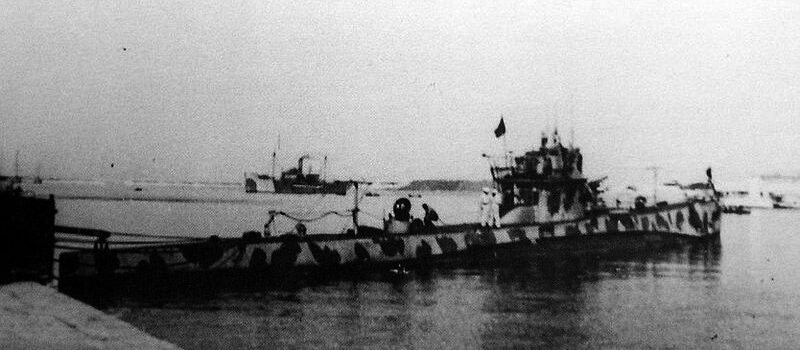
 Latest Facebook Entry -
Latest Facebook Entry -  X(Tweeter) Naval Encyclopedia's deck archive
X(Tweeter) Naval Encyclopedia's deck archive Instagram (@navalencyc)
Instagram (@navalencyc)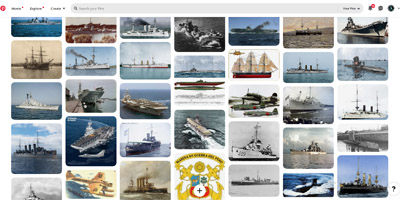


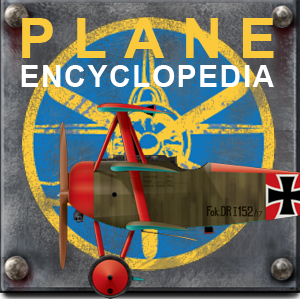
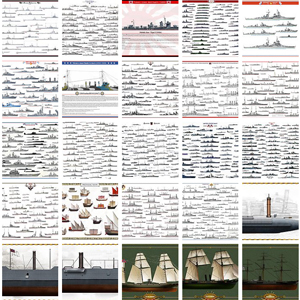
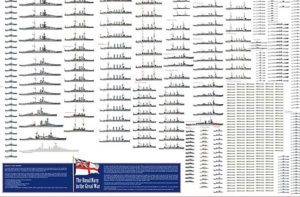
 French Navy
French Navy Royal Navy
Royal Navy Russian Navy
Russian Navy Armada Espanola
Armada Espanola Austrian Navy
Austrian Navy K.u.K. Kriegsmarine
K.u.K. Kriegsmarine Dansk Marine
Dansk Marine Nautiko Hellenon
Nautiko Hellenon Koninklije Marine 1870
Koninklije Marine 1870 Marinha do Brasil
Marinha do Brasil Osmanlı Donanması
Osmanlı Donanması Marina Do Peru
Marina Do Peru Marinha do Portugal
Marinha do Portugal Regia Marina 1870
Regia Marina 1870 Nihhon Kaigun 1870
Nihhon Kaigun 1870 Preußische Marine 1870
Preußische Marine 1870 Russkiy Flot 1870
Russkiy Flot 1870 Svenska marinen
Svenska marinen Søværnet
Søværnet Union Navy
Union Navy Confederate Navy
Confederate Navy Armada de Argentina
Armada de Argentina Imperial Chinese Navy
Imperial Chinese Navy Marinha do Portugal
Marinha do Portugal Mexico
Mexico Kaiserliche Marine
Kaiserliche Marine 1898 US Navy
1898 US Navy Sovietskiy Flot
Sovietskiy Flot Royal Canadian Navy
Royal Canadian Navy Royal Australian Navy
Royal Australian Navy RNZN Fleet
RNZN Fleet Chinese Navy 1937
Chinese Navy 1937 Kriegsmarine
Kriegsmarine Chilean Navy
Chilean Navy Danish Navy
Danish Navy Finnish Navy
Finnish Navy Hellenic Navy
Hellenic Navy Polish Navy
Polish Navy Romanian Navy
Romanian Navy Turkish Navy
Turkish Navy Royal Yugoslav Navy
Royal Yugoslav Navy Royal Thai Navy
Royal Thai Navy Minor Navies
Minor Navies Albania
Albania Austria
Austria Belgium
Belgium Columbia
Columbia Costa Rica
Costa Rica Cuba
Cuba Czechoslovakia
Czechoslovakia Dominican Republic
Dominican Republic Haiti
Haiti Hungary
Hungary Honduras
Honduras Estonia
Estonia Iceland
Iceland Eire
Eire Equador
Equador Iran
Iran Iraq
Iraq Latvia
Latvia Liberia
Liberia Lithuania
Lithuania Mandchukuo
Mandchukuo Morocco
Morocco Nicaragua
Nicaragua Persia
Persia San Salvador
San Salvador Sarawak
Sarawak Uruguay
Uruguay Venezuela
Venezuela Zanzibar
Zanzibar Warsaw Pact Navies
Warsaw Pact Navies Bulgaria
Bulgaria Hungary
Hungary

 Bundesmarine
Bundesmarine Dutch Navy
Dutch Navy Hellenic Navy
Hellenic Navy Marina Militare
Marina Militare Yugoslav Navy
Yugoslav Navy Chinese Navy
Chinese Navy Indian Navy
Indian Navy Indonesian Navy
Indonesian Navy JMSDF
JMSDF North Korean Navy
North Korean Navy Pakistani Navy
Pakistani Navy Philippines Navy
Philippines Navy ROKN
ROKN Rep. of Singapore Navy
Rep. of Singapore Navy Taiwanese Navy
Taiwanese Navy IDF Navy
IDF Navy Saudi Navy
Saudi Navy Royal New Zealand Navy
Royal New Zealand Navy Egyptian Navy
Egyptian Navy South African Navy
South African Navy






























 Ukrainian Navy
Ukrainian Navy dbodesign
dbodesign